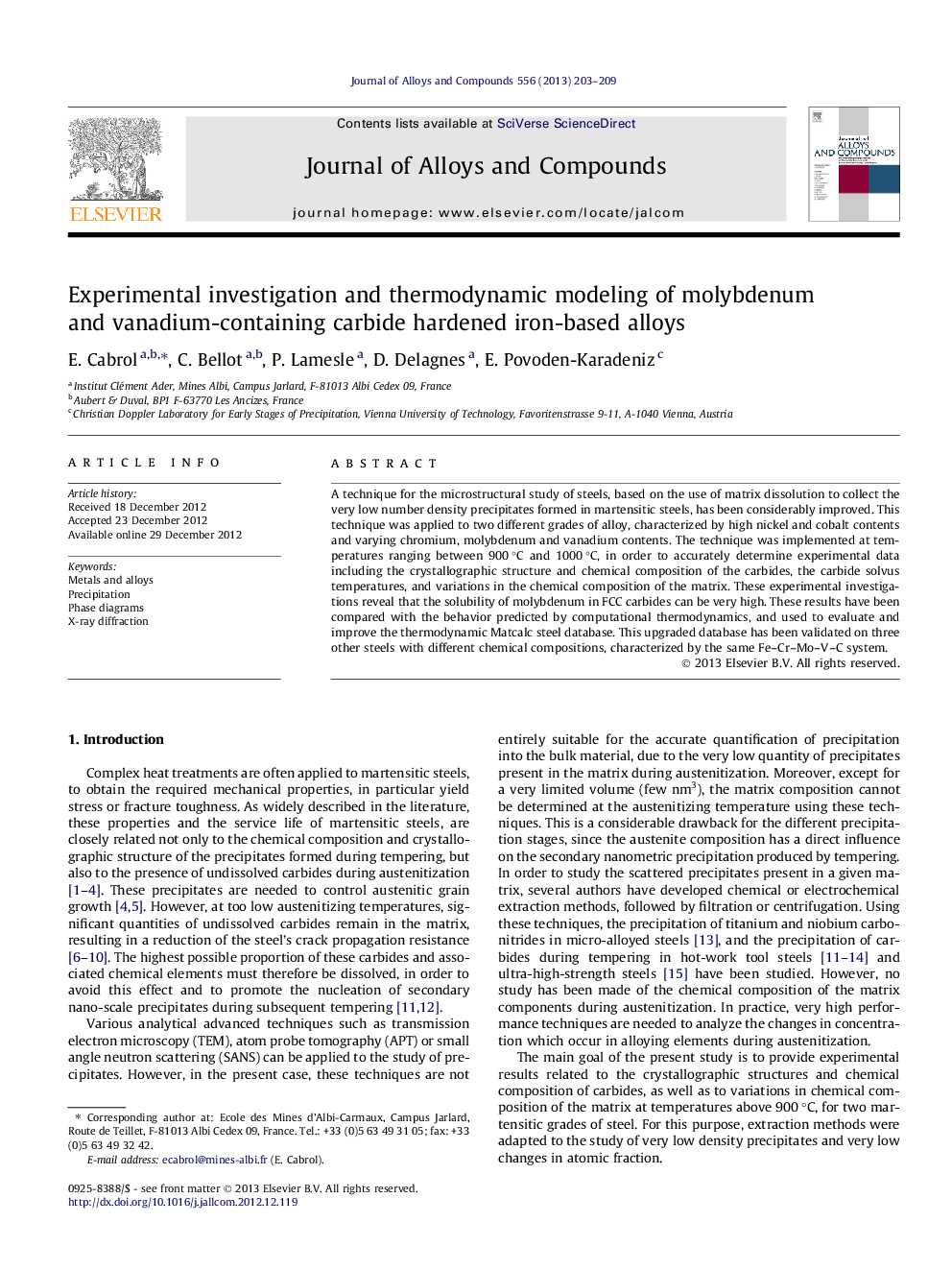| Article ID | Journal | Published Year | Pages | File Type |
|---|---|---|---|---|
| 1614693 | Journal of Alloys and Compounds | 2013 | 7 Pages |
A technique for the microstructural study of steels, based on the use of matrix dissolution to collect the very low number density precipitates formed in martensitic steels, has been considerably improved. This technique was applied to two different grades of alloy, characterized by high nickel and cobalt contents and varying chromium, molybdenum and vanadium contents. The technique was implemented at temperatures ranging between 900 °C and 1000 °C, in order to accurately determine experimental data including the crystallographic structure and chemical composition of the carbides, the carbide solvus temperatures, and variations in the chemical composition of the matrix. These experimental investigations reveal that the solubility of molybdenum in FCC carbides can be very high. These results have been compared with the behavior predicted by computational thermodynamics, and used to evaluate and improve the thermodynamic Matcalc steel database. This upgraded database has been validated on three other steels with different chemical compositions, characterized by the same Fe–Cr–Mo–V–C system.
► Improvement of a carbide selective extraction method. ► Determination of experimental data on the Fe–C–Cr–Mo–V system for carbides above 900 °C: crystallographic structures and compositions of precipitates, matrix composition. ► High molybdenum solubility in FCC carbides. ► Improvement of thermodynamic databases from experimental results. ► Validation of the optimized database with different compositions steels.
